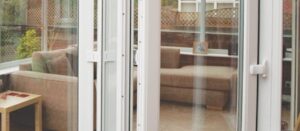Upvc Door Hinge Isn't As Difficult As You Think

Types of UPVC Door Hinges
Jewson offers a variety of uPVC doors for your home that are perfect for transforming or upgrading. If your uPVC door is catching on the floor or lets drafts in, it's most likely due to hinges being not aligned properly.
Understanding the various types of upvc door hinges are essential in resolving this issue. Here are some suggestions on what to look for.
UPVC
UPVC hinges are used to support doors as they are opened and closed. They are available in a wide variety of sizes and colors and are made to work with wood and uPVC doors. They can also be attached to internal and external doors. It is important to select the appropriate kind of UPVC door hinge for your door before you begin installing them.
uPVC is an acronym for Unplasticized Polyvinyl Chloride. It's a product that is used for a wide range of applications, including window sills and frames. It's a sturdy and low-maintenance material, which is often contrasted with aluminium and timber for its strength, cost-effectiveness, and ease of installation.
A properly-fitting hinge will reduce noise, draughts and offer a smoother closing and opening. They are typically attached to the door jamb and the door itself. It is essential to set them up correctly to ensure that they work smoothly.

There are many different kinds of UPVC hinges available. It's important to identify which one you have before making any adjustments or repairs. If you have a Butt hinge or a T hinge, or a flag hinge, for example it is essential to know the functions each hinge is capable of and how to adjust them when needed.
upvc door hinge adjustment is found on most uPVC doors and is generally connected to the frame of the door as well as the edge of the sash. This is the most commonly used type of uPVC door hinge. It provides lots of movement and a streamlined look for your home. This kind hinge is usually adjustable, which allows you to adjust your door's position and alignment over time.
On the other hand, if you have a T-hinge, you'll discover a screw that can be adjusted at the bottom. This is a way to change the compression of your hinge by adding or removing the shims. Start by turning the screw a couple of turns and then evaluating it. If needed you need to make adjustments, do so.
A flag hinge is similar to a T-hinges, as it has a knuckleplate with an 'flag'-like cutout on the end. This allows for full rotation and movement. It's a simple to adjust uPVC type hinge. Simply loosen the screw on the knuckleplate, and then add the shims or take them off if you want to increase the compression.
It's important to check your uPVC hinges on a regular basis, whether you have a Butt hinge, a T hinge or a flag hinge. It's normal for them to be displaced or drop in time, particularly when the door is used regularly and opened and closed. This simple guide, with diagrams and videos will help you understand how to adjust the uPVC hinges. Be sure to follow the steps carefully to avoid causing any damage or further problems.
Butt
Hinges are the hardware component of your window or door that keeps it in place. They come in various sizes and shapes, finishes, and materials for various applications. The best hinge for your project will depend on the location it's installed and the aesthetic look you're aiming for. If you require a heavy duty hinge for your barn door, or you just want to add a few decorative elements to a cabinet, the choices are endless.
Butt hinges are one of the most commonly used types of hinges for doors. They are simple to install and offer solid support for frames and doors without adding extra weight. They're not as strong as other hinges and might require maintenance.
A butt hinge is comprised of two leaves or plates with screw holes in each. They are mortised into the surface of the frame and door. The plates are joined by a central pin which is located in the knuckle section of each plate. When doors are closed the hinge pin is concealed and only the knuckles can be seen.
Butt hinges are able hold more weight as they have a wider knuckle. However, they aren't recommended for doors that will be constantly opened and closed, as the continuous abrasion can result in premature wear.
Butt hinges are only suitable for surfaces with recess. In the majority of cases, holes must be drilled into the fixed object to allow the hinges to be fitted however, they can be fixed to the surface using an exclusive fastener.
Butt hinges come in a variety of finishes and materials that can be matched to any interior or exterior installation, whether traditional wood or modern metals. They are available in different sizes to fit on any frame and door.
Butt hinges are available in a variety of styles including strap and ball tip. These styles offer the same functions as standard hinges, but with a different look.
While butt hinges are straightforward to install and offer solid, durable construction but they are also susceptible to security breaches due to their visible. The pins that are exposed on butt hinges can be removed and the hinges are able to be manipulated to allow thieves easy access to locked doors. All hardware components must be inspected and lubricated regularly to avoid this. This helps reduce friction that causes the hinges becoming noisy or binding and prolongs their life.
